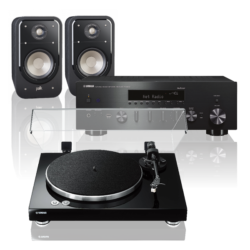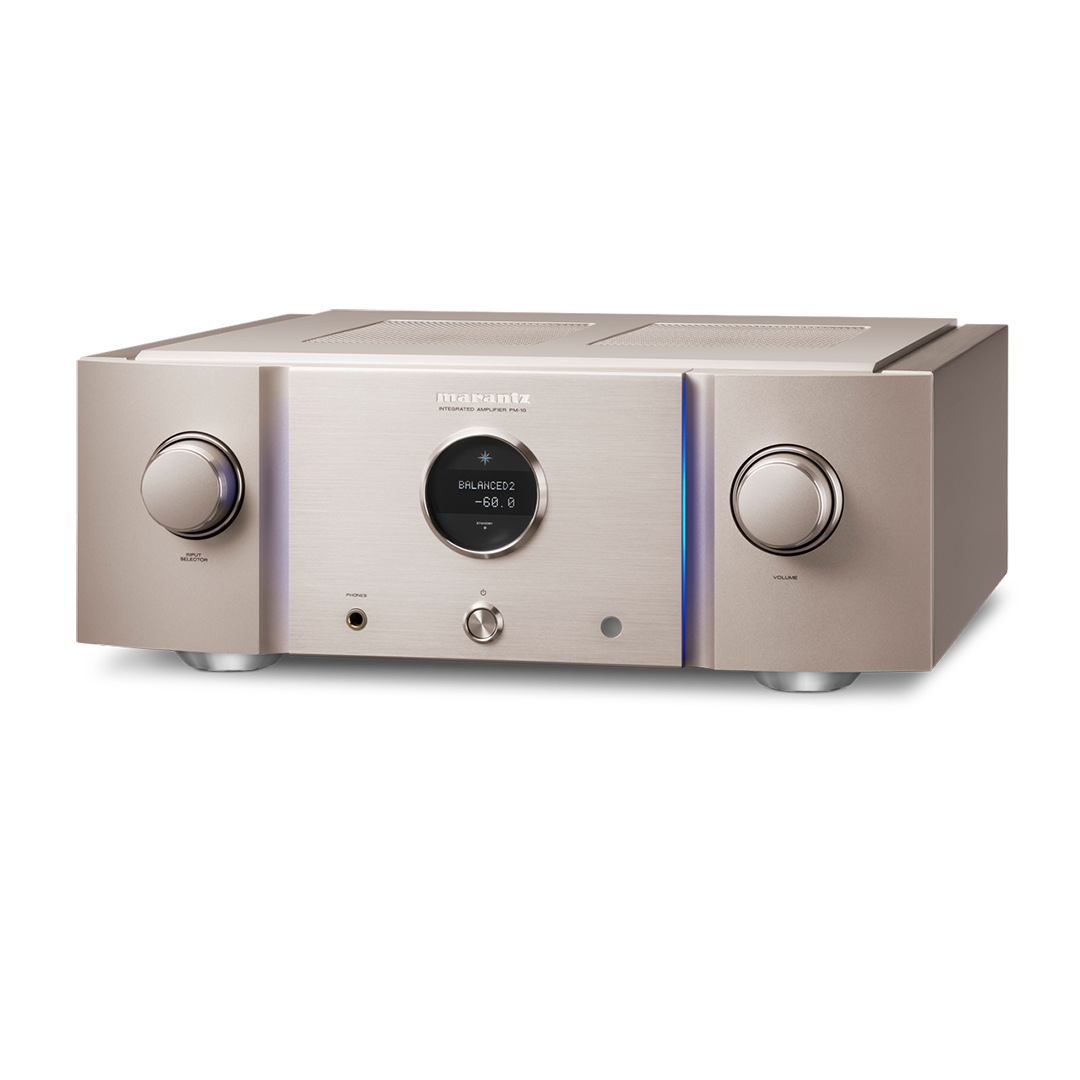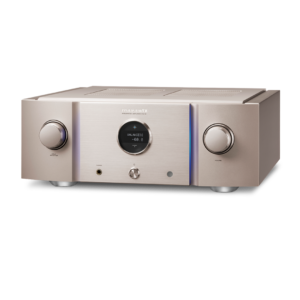Marantz PM10S1 Flagship Integrated Amplifier
With a history stretching all the way to that ground-breaking Audio Consolette – which Saul B Marantz started manufacturing in 1952, and which soon became the first real Marantz product, the Model 1 preamplifier, it’s...
Read MoreWith a history stretching all the way to that ground-breaking Audio Consolette – which Saul B Marantz started manufacturing in 1952, and which soon became the first real Marantz product, the Model 1 preamplifier, it’s no surprise that the company’s very latest Premium Series model, the PM10s1, is an integrated amplifier built to set new standards with all of today’s music formats.
- The new reference class Integrated amplifier
- Four switching power amplifier channels in bridged mode (two per channel) for maximum grip and drive
- True Balanced Concept from input to speaker to realise ground-free signal management
- Massive power: 200Wpc per channel into 8ohms, and 400Wpc into 4ohms
- Easy driving of a wide range of speakers
- Wide-ranging dynamic ability thanks to instant high-current power supply
- Fully balanced throughout: both preamplifier and power amplifiers
- Marantz Hyper Dynamic Amplifier Modules (HDAM) in preamp stage
- Dual mono power amplifier configuration
- Separate power supplies for preamplifier and control processor, and for each power amp channel
- Discrete phono stage for moving coil and moving magnet cartridges in its own shielded case.
- High-quality construction with double-layer chassis, 5mm thick aluminium top lid, solid aluminium front, copper plated chassis and high-purity copper speakers terminals
- Double thickness copper PCB for the output section and main power supplies
- 4 Year Warranty
Exclusive at: Midland
$15,790.00
AUD Inc. GST
Amplifiers – The Core of Marantz History
Its very first product was a high-quality preamplifier designed to make the most of the then-new LP record format. And with a history stretching all the way to that ground-breaking Audio Consolette – which Saul B Marantz started manufacturing in 1952, and which soon became the first real Marantz product, the Model 1 preamplifier – , it’s no surprise that the company’s very latest Premium Series model, the PM-10, is an integrated amplifier built to set new standards with all of today’s music formats.
In fact, this massively powerful integrated amplifier is constructed more like a high-end separate preamplifier and a pair of monobloc power amps, but all in one beautifully finished case, designed both to maximise performance and create a strong visual statement.
Pure Analogue
Another important part of the noise-reduction here is the fact that the PM-10 is a purely analogue amplifier: many rival designs are today including digital-to-analogue conversion, or adopting digital amplification and volume control, but the Marantz keeps things as clean and simple as possible with its highly-developed all-analogue design.
Why? Well, though it may seem convenient to have a DAC in the amplifier, digital circuitry is, by its very nature, noisy (in the electrical sense) and can interfere with the delicate analogue signals passing through the amp. That’s why Marantz chooses to design its Premium Series range with any digital-to-analogue conversion in its Super Audio CD or network music players, keeping its amplifiers as pure and clean as possible.
What’s more, to make the most of that purity of design, the PM-10 has also been designed with the option of working in ‘Purest Mode’: when engaged, this deactivates any superfluous circuits, giving the signal the cleanest possible path through the amplifier. There’s also a Power Amp Direct input, taking the signal straight from the input section to the power stage to let the unit work as a pure power amplifier.
Fully Balanced – From Input to Final Power Section
The benefits of balanced audio layout have long been understood: unlike a conventional layout, one half of the signal path is in the ground plane of either an amplifier or a cable, balanced working uses two conductors or paths – one for positive, the other for negative – and an entirely separate ground to protect them.
The benefit in cables is that any external interference will affect both positive and negative conductors, but since the signals they are carrying are the mirror image of each other, they will mutually cancel out any effect – which is why such cables are widely used in pro audio and studio applications, where sources of hum are common, and the longer cable runs involved makes them particularly prone to picking up interference.
The same is true when balanced working is applied to audio circuitry: not only does this mirror-imaging of the layout, in which identical components are handling the positive and negative ‘legs’ of the signal, cancel out any potential interference, it also means any noise or errors introduced in the circuitry will also be cancelled out.
An additional benefit is that balanced working also uses stronger signals than unbalanced designs, simple because both halves of the circuit are active – rather than just having one half pushing and the other just providing the ground, here we have a ‘push pull’ operation. And a stronger signal means one less susceptible to any outside interference: the more signal there is, the less obvious any noise will be.
Share your thoughts!
Let us know what you think...
Only logged in customers who have purchased this product may leave a review. Log in now










What others are saying
There are no contributions yet.